Last-Minute NYC Holiday Gift Guide 🎁
We’ve created a holiday gift guide with presents for the intrepid New Yorker that should arrive just in time—


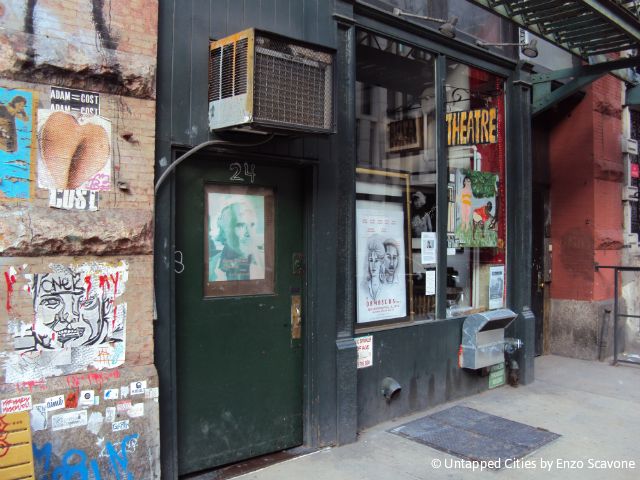
Entrance to the Gene Frankel Theatre with Gene Frankel’s portrait on the door.
In 2007, the opening of 40 Bond Street–a luxury condo by Ian Schrager–signaled the demographic shift to come in NoHo and its surroundings. NoHo, roughly defined by the ten blocks north of Houston Street, between Broadway and Bowery, was the home of a thriving theater and music community.
With the going rate of 1-bedroom apartments in NoHo at around $4000 today, it’s easy to see why there’s been difficulty sustaining some of the artistic venues in the area. The Bleecker Street and the Bouwerie Lane Theaters closed in 2010 and 2007, respectively and CBGB–a seminal establishment for the modern punk rock culture–shut its doors in 2006 after a lawsuit over outstanding rent. One institution that survived the rising property prices is the Gene Frankel Theatre, located at 24 Bond Street.
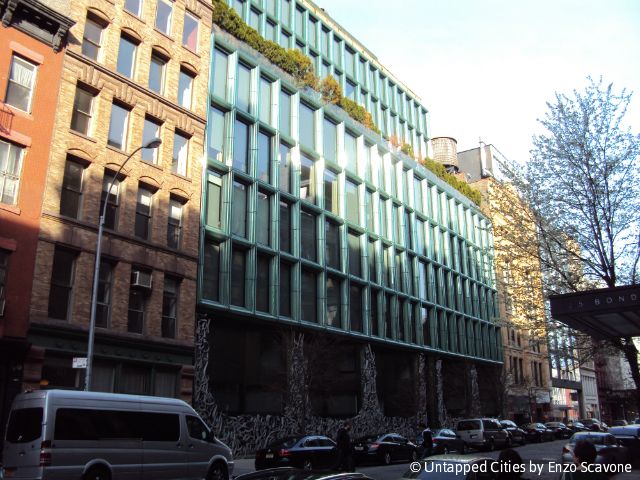
40 Bond Street
Founded in 1949 by actor Gene Frankel, the theater played a vital role in establishing the off-off-Broadway scene in New York. The 70-seat theater also served as a workshop and school. More than an artistic mission, the theater always had a greater community-oriented mentality. From its mission statement:
We are looking to give a home to artists that cultivate a theater that speaks not only of an idealistic socio-political change – but a personal change, the only truly manageable change that can lead to a new and better social, political, economic world. The work that has come from this venue for the last 63 years has had civil rights and progressive thinking at its core. Today this is more relevant and necessary than ever. We are looking to reach out to our community and invite its people in their whole to celebrate new thinking, new ideas and a deeply emotional positive change.
The theater hit an impasse when Gene Frankel died in 2005. The current director, Gail Thacker, took over the business and has been struggling to make ends meet. With business savvy and enthusiasm she was able to avoid bankruptcy.
According to Thacker, gentrification does not only bring drawbacks like exorbitant property prices. It also brings more foot traffic to Bond Street, which is now a block well frequented by shoppers and tourists.
NoHo hasn’t always been a refuge for wealthy New Yorkers, although Bond Street was initially laid out for the city’s richest who built mansions on the wide street in the early 1800s. By the 1880s and 1890s, manufacturing dominated and the Greek Revival architectural style was instituted as a nod to its illustrious past. 24 Bond Street, the building where the Gene Frankel Theater is located, was constructed in 1893.
With the decline of the textile and manufacturing industry in the 1960s and 1970s, much like in neighboring SoHo, artists moved in. Robert Mapplethorpe lived at 24 Bond Street, where the theater is now, and Chuck Close was his next-door neighbor. What happens after that is a well-told story in cities, often categorized under the rubric of “gentrification.”
NoHo was designated a historic district in 1999. At the time, the facade sculptures on the Gene Frankel Theater by Bruce Williams were deemed illegal, but after a public hearing the Landmarks Preservation Commission ruled in favor of keeping the art.
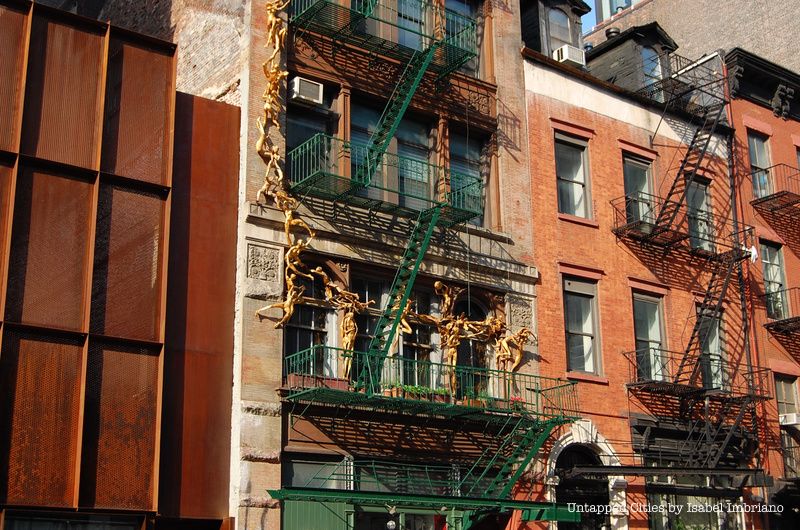
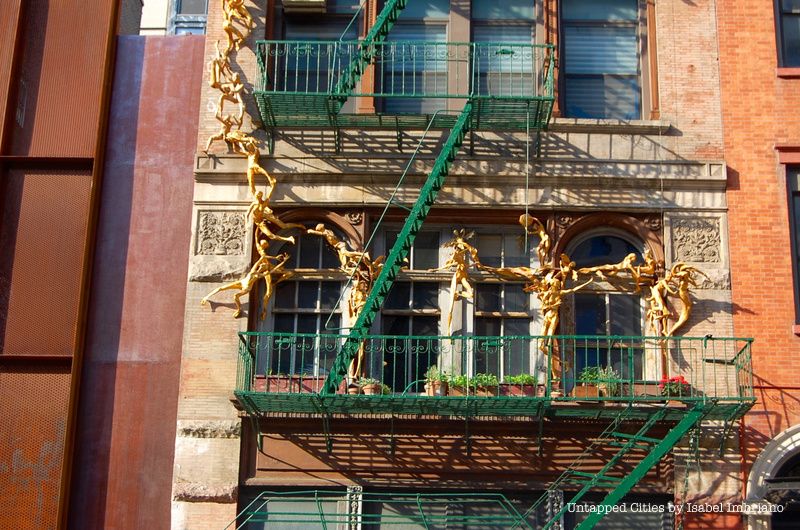
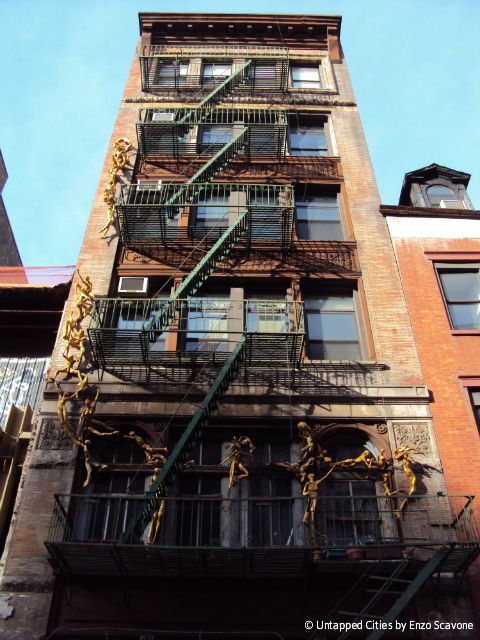
The front of the building with statues sculpted by the artist Bruce Williams.
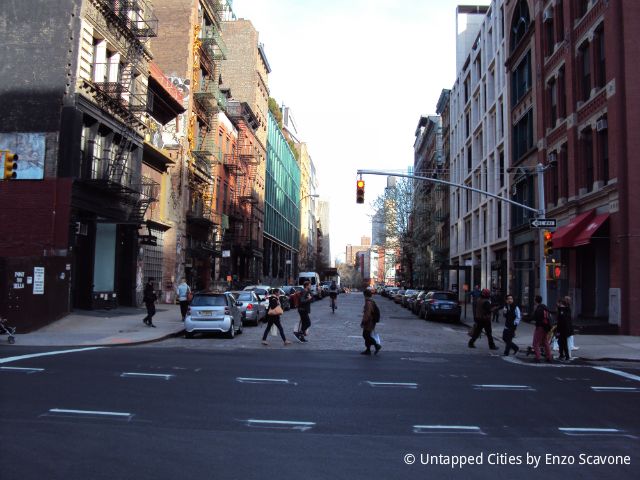
Bond Street and Lafayette in NoHo (looking east, into Bond Street)
The current show at the Gene Frankel Theater, To Damascus Part I, is on until May 11th followed by Shakespeare’s Measure for Measure on May 22nd.
Subscribe to our newsletter